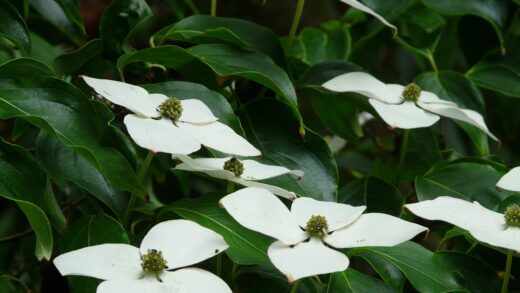Successfully guiding your plush plant through the winter months is a critical aspect of its long-term care, especially for those living in climates with freezing temperatures. This succulent is not frost-tolerant, and exposure to even a brief period of frost can cause irreparable damage to its water-filled, velvety leaves. The winter period is a time of natural dormancy for the plant, a resting phase where its growth slows dramatically in response to shorter daylight hours and cooler temperatures. Your care routine must adapt to this change, focusing on providing a protective environment and significantly reducing water and nutrient inputs to align with the plant’s diminished metabolic activity.
The primary and most crucial step in wintering the plush plant is to bring it indoors well before the first frost is expected in your region. Monitor your local weather forecasts as autumn progresses, and plan to move the plant inside when nighttime temperatures consistently begin to drop below 10 degrees Celsius. This provides a safe buffer and avoids any risk of accidental frost damage. When you bring the plant inside, take the opportunity to inspect it thoroughly for any pests, such as mealybugs or spider mites, that may have taken up residence outdoors. It is far easier to treat a pest issue before introducing the plant into your indoor collection, preventing it from spreading to your other houseplants.
Once inside, the ideal winter location for your plush plant is a spot that is both cool and bright. The coolness helps to encourage and maintain its dormant state, while the brightness ensures it continues to receive enough light to prevent severe etiolation, or stretching. A position near a bright, unheated window, such as in a cool conservatory, a minimally heated porch, or even a garage with a window, can be perfect, provided the temperature remains consistently above freezing, ideally between 5 and 10 degrees Celsius. If a cool spot is not available, simply placing it in the brightest window of your home will suffice, but be aware that it may not enter a full dormancy in warmer household temperatures.
During this dormant period, the most significant change to your care routine will be a drastic reduction in watering. With its growth at a near standstill, the plant’s need for water is minimal. Watering should be reduced to once every four to six weeks, or even less, depending on the coolness and humidity of its environment. The goal is simply to provide just enough moisture to prevent the roots from completely desiccating and the leaves from becoming overly shriveled. It is far safer to err on the side of underwatering during the winter; the plant is much more likely to succumb to root rot from excessive moisture in cool conditions than it is to suffer from drought.
Preparing the plant for the indoors
The transition from an outdoor summer environment to an indoor winter home can be a shock to the plush plant if not managed carefully. Before bringing the plant inside for the winter, it is a good practice to prepare it for the change. Begin by gradually reducing its exposure to direct sunlight over a week or two if it has been in a very sunny location. This helps it acclimate to the lower light levels it will experience indoors, reducing the risk of sudden leaf drop. This is also the perfect time to do a little housekeeping on the plant.
More articles on this topic
A thorough pest inspection is a non-negotiable step in this preparatory phase. Carefully examine every part of the plant, paying close attention to the dense center of the rosette and the undersides of the leaves, which are favorite hiding spots for pests like mealybugs and aphids. If you find any pests, it is crucial to treat the plant before it comes inside. A gentle spray with an insecticidal soap or neem oil solution can be an effective way to clean the plant and eliminate any unwanted hitchhikers. This preventative measure will save you from a potential pest outbreak among your indoor plants later on.
Grooming the plant before its move is also beneficial. Remove any dead, dried, or yellowing leaves from the base of the plant. This not only improves the plant’s appearance but also eliminates potential hiding places for pests and reduces the amount of decaying organic material that could promote fungal growth in the more stagnant indoor air. Trimming off any spent flower stalks from the summer will also help the plant conserve its energy for the dormant period ahead, rather than wasting it on seed production.
Finally, consider the condition of the soil and the pot. If the soil is particularly damp from recent rain, it is a good idea to let it dry out as much as possible before bringing the plant indoors. Starting the winter with waterlogged soil is a recipe for root rot. This preparatory period is a checkpoint, a moment to ensure your plush plant is entering its winter sanctuary in the best possible condition – clean, pest-free, and not overly wet – setting the stage for a successful and restful dormant season.
Indoor winter care requirements
Once your plush plant is safely indoors for the winter, your care responsibilities shift to maintaining a stable and appropriate environment for its dormancy. The two most important factors to manage are light and temperature. The plant still requires a good amount of light, even while dormant, to maintain some level of photosynthesis and to prevent it from becoming weak and stretched. An east-facing or south-facing window is often the best choice, providing several hours of bright, indirect light each day. If your home has low light levels, you may consider supplementing with a grow light to keep the plant compact and healthy.
More articles on this topic
Temperature management is equally important. A cool environment is ideal for encouraging a true dormant period, which is beneficial for the plant’s long-term health and can promote better flowering in the following season. Aim for a location where the temperature stays consistently between 5 and 15 degrees Celsius. Avoid placing the plant near heat sources such as radiators, heating vents, or fireplaces, as the warm, dry air can stress the plant and may encourage pests like spider mites. Also, keep it away from drafty windows or doors where it could be exposed to sudden cold drafts.
Watering is the area where the most dramatic adjustment is needed. During winter dormancy, the plush plant’s water uptake is extremely low. You must allow the soil to become completely and thoroughly dry and to remain that way for an extended period before providing any water. For many, this will mean watering only once a month or even less frequently. When you do water, provide just enough to lightly moisten the soil, rather than a deep, thorough soaking you would perform in the summer. Overwatering in the winter is the single most common reason for the failure of wintering succulents indoors.
Throughout the winter, continue to monitor the plant for any signs of trouble. While its growth will be slow, it should still appear healthy. Check occasionally for pests that may have survived the initial inspection and for any signs of rot or disease. Avoid the temptation to fertilize; feeding a dormant plant is unnecessary and can harm the roots. The goal of indoor winter care is not to encourage growth, but to provide a safe, stable, and restful environment that allows the plant to conserve its energy and successfully make it through to the spring.
Transitioning back outdoors in spring
As winter draws to a close and the threat of frost has definitively passed, it is time to start thinking about moving your plush plant back outdoors for the growing season. This transition must be done gradually to prevent shocking the plant, which has become accustomed to the lower light levels and stable temperatures of its indoor environment. Abruptly placing it in direct, intense spring sunlight can cause severe sunburn on the leaves, leaving permanent scars. A process of slow acclimatization, often called “hardening off,” is essential for a smooth and successful move.
Begin the hardening-off process by placing the plant in a sheltered, shady location outdoors for just an hour or two on the first day. A spot on a covered porch or under a large tree is ideal. Over the course of one to two weeks, gradually increase the amount of time the plant spends outside each day. At the same time, slowly increase its exposure to direct sunlight, starting with the gentle morning sun and progressively moving it to brighter locations. This allows the plant’s leaves to build up a tolerance to the more intense outdoor light levels.
During this transition period, you can also begin to gradually increase the frequency of your watering. As the plant receives more light and warmth, its metabolic processes will speed up, and it will begin its active growth phase. Start by watering it thoroughly once it has been moved back to its summer location and the soil has dried out. From this point, you can resume your regular summer watering routine, using the “soak and dry” method. This is also the appropriate time to begin your fertilization schedule for the season, starting with a half-strength dose.
Continue to monitor the plant closely during and after the transition. Watch for any signs of stress, such as sunburn (white or brown patches on the leaves) or wilting. If you notice any issues, move the plant back to a more protected location and slow down the acclimatization process. By taking the time to reintroduce your plush plant to the outdoors carefully and methodically, you ensure that it starts the growing season off on the right foot, ready to thrive in the warmth and light of the summer months.


















